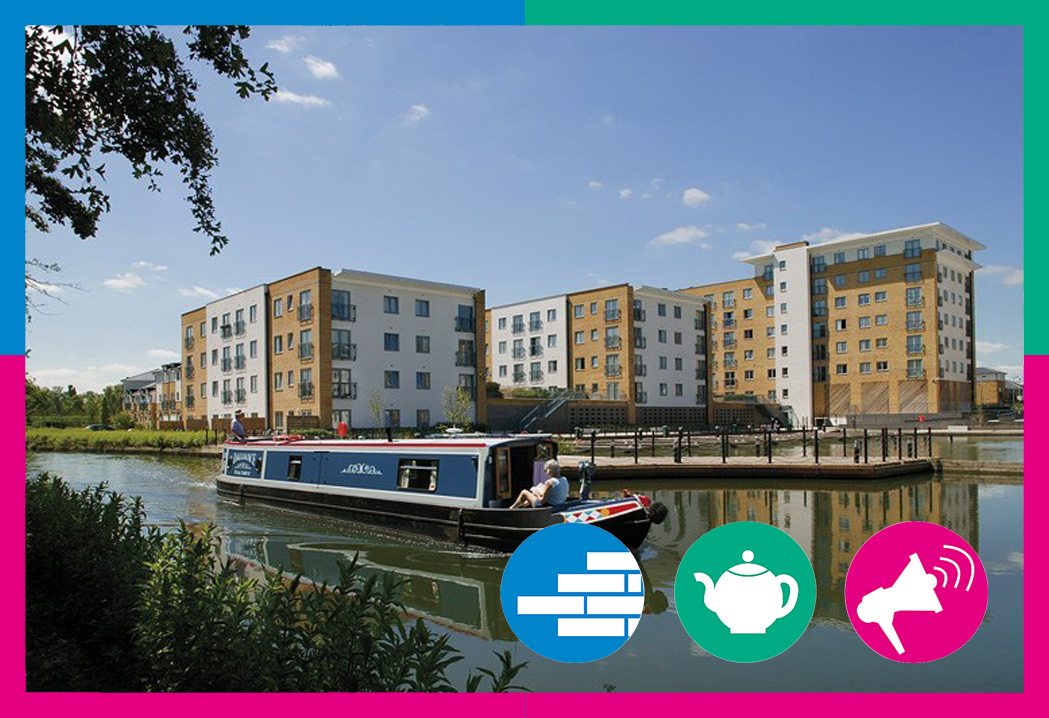About
Grand Union Village is a major development on brownfield, former industrial land in Northolt, West London. The site required extensive decontamination before building could begin. The original plan (c. 2000) was for 700 ‘eco-homes’ including 35% affordable homes and key worker housing. A Community Development Trust was set up to promote a strong and active community, with financial support from the developer, Taylor Wimpey, and the housing association, Genesis HA.
Eighteen years later the community appears to be active and sustainable but it has not necessarily developed as originally envisaged. There are a much higher proportion of rented homes than originally intended as a result of investors buying properties to let.
Project details
Grand Union Village Community Development Trust (CDT) is “intended to provide a place where residents, stakeholders and local voluntary and community groups can meet together for social, recreational and community purposes”. (1) The CDT is a company limited by guarantee with charitable status.
Development Trusts are defined as “enterprises with social objectives which are actively engaged in the most disadvantaged areas to bring together residents, voluntary organisations, religious and other groups and local authority councillors and planners”. (3) CDTs have a more specific role in managing land for development and aiming to maximising community involvement in the development process.
Grand Union Village CDT was set up to give new residents a greater stake in the way their homes and the new community were to be developed and managed. The scale of the development – originally envisaged as 700 new homes, however in practice this has become over 950 – meant it was worthwhile investing resources to create a standing organisation representing residents’ interests.
The CDT has a Board of up to 19 members representing the developer, housing associations, local authorities, a representative of local businesses, two ward councillors, and up to eight residents. It aims to support a ‘sustainable and inclusive community’ by involving partner organisations and residents managing facilities and open space for the benefit of the community, supporting other initiatives such as a car share club, and promoting employment and training opportunities for residents.
The Trust employs a Community Development Officer and Admin Assistant.
The facilities managed by the Trust include large and small meeting rooms plus a kitchen and toilets. These appear to be well-used by residents, the community’s Facebook page promotes events such as the Christmas Fayre, children’s dance classes, a Halloween party, soft play, massage, boxfit, first aid courses, English classes, Arabic classes for children, a Macmillan coffee morning and swimming classes. (4) It also includes police information and details of local job opportunities. A ‘welcome pack’ is provided for new residents.
Amenities include a medical centre and three shops – a supermarket, hair and beauty salon and a takeaway. In the original plans provision was made for a private leisure facility, but this does not appear to have gone ahead.

